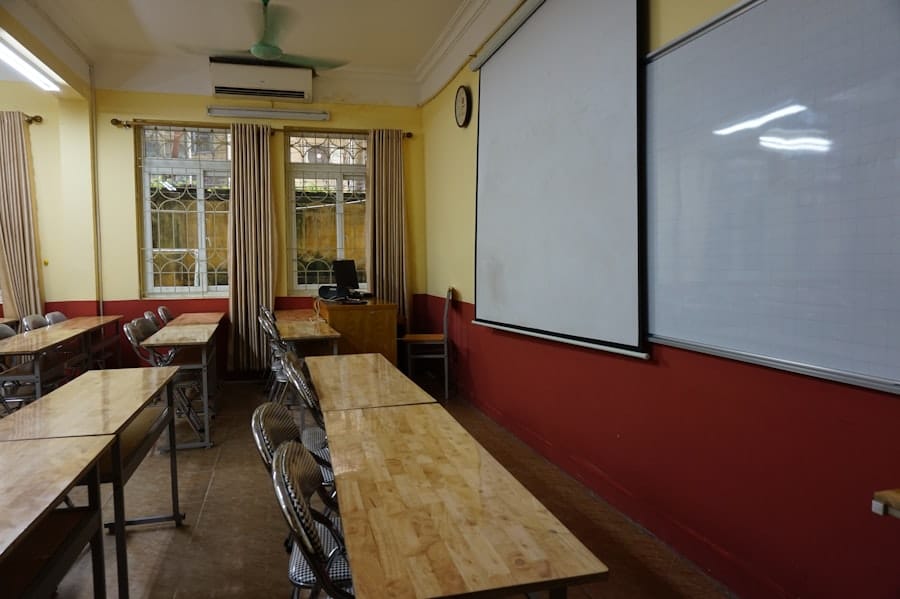The advent of virtual reality (VR) technology has ushered in a transformative era for education, reshaping how knowledge is imparted and absorbed.
The rise of VR in education can be attributed to several factors, including advancements in technology, increased accessibility of VR devices, and a growing recognition of the need for innovative teaching strategies that engage students more effectively.
As educational institutions seek to enhance learning outcomes and cater to diverse learning styles, VR has emerged as a compelling solution. In recent years, the proliferation of affordable VR headsets and applications has made it feasible for schools and universities to integrate this technology into their curricula. Institutions are increasingly investing in VR tools that allow students to explore complex subjects in a three-dimensional space.
For instance, medical students can practice surgical procedures in a risk-free environment, while history students can virtually visit ancient civilizations. This shift towards experiential learning not only captivates students’ attention but also fosters deeper understanding and retention of information. As educators recognize the potential of VR to create engaging and interactive learning environments, its adoption continues to grow across various educational settings.
Key Takeaways
- Virtual reality is becoming increasingly popular in education, offering immersive and interactive learning experiences for students.
- VR classrooms benefit distance education by providing a more engaging and interactive learning environment, breaking down geographical barriers.
- VR technology enhances the learning experience by allowing students to explore and interact with virtual environments, making learning more interactive and memorable.
- Overcoming challenges in implementing VR classrooms requires addressing issues such as cost, technical requirements, and ensuring accessibility for all students.
- Successful VR classroom programs include applications in medical education, language learning, and vocational training, showcasing the potential of VR in education.
Benefits of VR Classrooms for Distance Education
Distance education has gained significant traction in recent years, particularly in light of global events that necessitated remote learning solutions. VR classrooms offer unique advantages that enhance the distance learning experience, making it more interactive and engaging for students who may otherwise feel isolated in traditional online formats. One of the primary benefits of VR in distance education is the ability to create a sense of presence and community among learners.
Through immersive environments, students can interact with their peers and instructors as if they were physically present in the same space, fostering collaboration and social interaction that is often lacking in conventional online courses. Moreover, VR classrooms can cater to various learning styles, accommodating visual, auditory, and kinesthetic learners alike. For example, a science lesson on the solar system can be transformed into an interactive journey through space, allowing students to visualize planetary movements and gravitational forces firsthand.
This multisensory approach not only enhances comprehension but also motivates students to engage more deeply with the material. Additionally, VR technology can provide personalized learning experiences, enabling students to progress at their own pace and revisit challenging concepts as needed. This adaptability is particularly beneficial in distance education, where learners may have varying levels of prior knowledge and experience.
How VR Technology Enhances Learning Experience

The integration of VR technology into educational settings significantly enhances the overall learning experience by providing immersive simulations that promote active participation. Unlike traditional methods that often rely on passive absorption of information, VR encourages students to engage with content dynamically.
This hands-on approach not only solidifies theoretical knowledge but also cultivates critical thinking and problem-solving skills. Furthermore, VR technology allows for experiential learning opportunities that would be impossible or impractical in a physical classroom. Students can embark on virtual field trips to historical landmarks, explore the depths of the ocean, or even travel back in time to witness significant events.
Such experiences provide context and relevance to academic subjects, making learning more meaningful. Additionally, the gamification elements often incorporated into VR applications can further enhance motivation and engagement. By turning lessons into interactive challenges or quests, educators can tap into students’ natural curiosity and desire for exploration, ultimately leading to improved academic performance.
Overcoming Challenges in Implementing VR Classrooms
Despite the numerous advantages of VR classrooms, several challenges must be addressed to ensure successful implementation in educational settings. One significant hurdle is the cost associated with acquiring VR hardware and software. While prices have decreased over time, many schools may still find it difficult to allocate sufficient funds for comprehensive VR programs.
Additionally, ongoing maintenance and updates for VR systems can strain budgets further. To overcome this challenge, educational institutions may need to explore partnerships with technology companies or seek grants specifically aimed at enhancing digital learning resources. Another challenge lies in the training and professional development required for educators to effectively integrate VR into their teaching practices.
Many teachers may lack familiarity with VR technology or feel apprehensive about incorporating it into their lessons. To address this issue, schools should prioritize providing adequate training sessions that equip educators with the necessary skills and confidence to utilize VR tools effectively. Furthermore, creating a supportive community among teachers who are experimenting with VR can foster collaboration and knowledge sharing, ultimately leading to more innovative uses of the technology in the classroom.
Examples of Successful VR Classroom Programs
Several educational institutions have successfully implemented VR classroom programs that serve as models for others looking to adopt this technology. One notable example is Stanford University’s Virtual Human Interaction Lab (VHIL), which explores how immersive virtual environments can influence human behavior and learning outcomes. Through various projects, VHIL has demonstrated how VR can be used to teach empathy by allowing students to experience life from different perspectives, such as those of marginalized communities or individuals facing social challenges.
Another exemplary program is the use of Google Expeditions in K-12 schools across the globe. This platform enables teachers to take students on virtual field trips to locations ranging from the Great Barrier Reef to the surface of Mars. By providing immersive experiences that align with curriculum standards, Google Expeditions has proven effective in enhancing student engagement and understanding of complex subjects.
Schools that have adopted this program report increased enthusiasm among students and improved academic performance as a result of these interactive learning experiences.
The Future of VR Classrooms in Distance Education

As technology continues to evolve at a rapid pace, the future of VR classrooms in distance education appears promising. Innovations such as augmented reality (AR) and mixed reality (MR) are likely to complement existing VR applications, creating even more dynamic learning environments that blend digital content with the physical world. For instance, AR could allow students to visualize complex data sets or historical artifacts within their own living spaces, further bridging the gap between theoretical knowledge and real-world application.
Moreover, advancements in artificial intelligence (AI) could lead to more personalized learning experiences within VR classrooms. AI algorithms could analyze individual student performance and adapt content delivery accordingly, ensuring that each learner receives tailored support based on their unique needs and preferences. This level of customization could significantly enhance student outcomes in distance education settings by providing targeted interventions when necessary.
As educational institutions continue to embrace technological advancements, the integration of VR into distance education will likely become increasingly sophisticated and widespread.
Tips for Teachers and Students in VR Classrooms
To maximize the benefits of VR classrooms, both teachers and students should adopt specific strategies that enhance their experiences within these immersive environments. For educators, it is essential to design lessons that leverage the unique capabilities of VR technology while aligning with curriculum objectives. This may involve creating interactive scenarios that encourage collaboration among students or incorporating assessments that evaluate their understanding through practical applications rather than traditional testing methods.
Students also play a crucial role in optimizing their learning experiences within VR classrooms. They should approach these immersive environments with an open mind and a willingness to engage actively with the content presented. Taking notes during virtual lessons or participating in discussions with peers can help reinforce learning outcomes.
Additionally, students should be encouraged to provide feedback on their experiences within VR classrooms so that educators can continuously improve lesson design and implementation strategies.
Ethical Considerations in VR Classroom Settings
As with any emerging technology, ethical considerations must be taken into account when implementing VR classrooms in educational settings. One primary concern is data privacy; as students interact within virtual environments, they may generate data that could be sensitive or personal. Educational institutions must ensure that robust data protection measures are in place to safeguard student information from unauthorized access or misuse.
Another ethical consideration involves ensuring equitable access to VR technology among all students. Disparities in access could exacerbate existing inequalities in education if only certain groups benefit from immersive learning experiences while others are left behind. To address this issue, schools should strive to provide equal opportunities for all learners by exploring funding options or community partnerships that facilitate access to VR resources for underprivileged students.
In conclusion, while the integration of virtual reality into education presents numerous opportunities for enhancing learning experiences and engagement among students, it also necessitates careful consideration of ethical implications and challenges associated with implementation. By addressing these concerns proactively and fostering an inclusive environment for all learners, educational institutions can harness the full potential of VR technology in distance education settings.
In the rapidly evolving landscape of distance education, virtual reality (VR) classrooms are emerging as a transformative tool, offering immersive learning experiences that transcend traditional boundaries. A related article that delves into the technological advancements supporting these innovations is “Unlock a New World of Possibilities with the Samsung Galaxy Chromebook.” This piece explores how cutting-edge devices like the Samsung Galaxy Chromebook are enhancing educational experiences by providing the necessary hardware to support VR applications. You can read more about it by visiting the article

